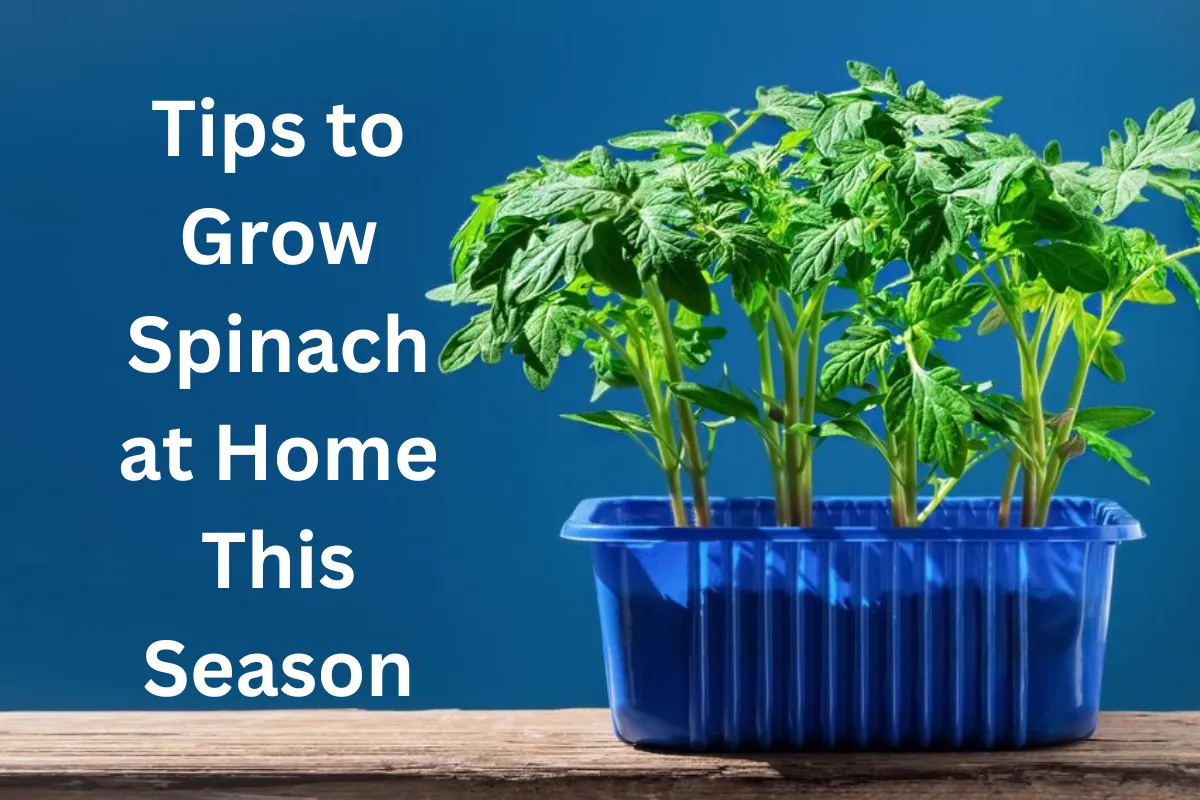1. Sow, Grow, and Harvest Your Spinach Patch
Embarking on a journey to grow your own spinach is not just rewarding; it’s a step towards a healthier and more sustainable lifestyle.
Let’s dive into some expert tips to ensure your spinach thrives at home.
2. Selecting the Right Spinach Variety for Your Space
Choosing the right spinach variety is crucial.
Opt for space-efficient varieties if you have a smaller garden or consider the more robust ones if space is abundant.
Varieties like “Bloomsdale” or “Baby Spinach” are popular for home cultivation.
3. Picking the Perfect Spot: Sunlight and Soil Considerations
Spinach loves sunlight but not scorching heat.
Plant your seeds in an area that receives partial shade, especially in warmer climates.
Ensure well-draining soil rich in organic matter to keep your spinach happy.
4. Planting Spinach Seeds: A Beginner’s Guide
Spinach seeds are small but mighty.
Plant them about half an inch deep and one inch apart.
Water the soil gently, keeping it consistently moist until the seeds germinate, usually within 7-14 days.
5. Watering Wisdom: Keeping Spinach Hydrated
Spinach prefers consistently moist soil.
Water regularly but avoid overwatering, as it may lead to root rot.
Aim for an inch of water per week, either from rainfall or irrigation.
6. Nourishing Your Spinach: Fertilizing Tips
Spinach is a leafy green, and like any green, it thrives on nutrients.
Use a balanced, all-purpose fertilizer, and apply it when the plants are about 3-4 weeks old. Remember, moderation is key.
7. Companion Planting: Spinach’s Garden Allies
Companion planting can enhance spinach growth.
Planting spinach alongside carrots or radishes can improve nutrient uptake and protect against pests.
8. Dealing with Common Pests: Natural Remedies
Every garden faces pest challenges.
For spinach, watch out for aphids and caterpillars.
Combat them with natural solutions like neem oil or a mild soap-water mixture.
9. Harvesting Spinach Leaves: Timing Matters
The key to harvesting spinach is to pick the outer leaves first, allowing the inner leaves to mature.
Harvest before the plant bolts, usually around 6-8 weeks after planting.
10. Storing Your Bounty: Keeping Spinach Fresh
After a successful harvest, proper storage is vital.
Rinse spinach leaves, allow them to dry, and store them in a breathable container in the refrigerator.
Use within a week for the freshest taste.
11. Troubleshooting Common Issues: Yellowing and Bolting
Yellowing leaves or premature bolting can be signs of stress.
Ensure your spinach is well-watered, protected from extreme temperatures, and consider providing shade during hotter days.
12. Spinach Recipes: From Garden to Table
Celebrate your homegrown spinach by incorporating it into delicious recipes.
Whether it’s a nutrient-packed smoothie or a classic spinach and feta salad, the possibilities are endless.
Conclusion:
Savor the Fruits (and Leaves) of Your Labor
Growing spinach at home is a journey filled with green goodness.
From planting the seeds to harvesting your homegrown bounty, each step is a celebration of sustainability and self-sufficiency.
FAQs: Your Spinach Growing Guide
Q1: Can I grow spinach indoors?
A1: Yes, you can! Choose a sunny windowsill or use grow lights, and follow the same care guidelines for outdoor cultivation.
Q2: How long does it take for spinach to grow from seed to harvest?
A2: Spinach typically takes about 6-8 weeks from seed to harvest, depending on the variety and growing conditions.
Q3: Can I regrow spinach from kitchen scraps?
A3: While it’s challenging to regrow spinach from scraps, you can harvest multiple times from the same plant by picking outer leaves and allowing inner leaves to mature.
Q4: What’s the best time to plant spinach seeds?
A4: Plant spinach seeds in early spring or late summer for the best results. Spinach prefers cooler temperatures.
Q5: Can I use store-bought spinach seeds for planting?
A5: Absolutely! Ensure the seeds are fresh, and you’re good to go. Store-bought seeds are often well-suited for home cultivation.
With these tips in your gardening arsenal, get ready to enjoy the freshest, homegrown spinach on your plate!



